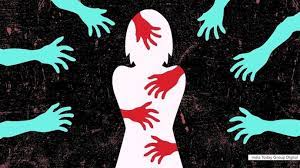How the armed forces can be prepared for transgender personnel

Just as the dedication and professionalism of the initial batches of women who served in uniform paved the way for more women to serve in uniform with pride, so also the hard work of the first lots of transgender professionals will pave the way for their acceptance into mainstream services. Hence, it is important to select them wisely.
Written by Madhuri Kanitkar
Over the past few years, there has been growing acceptance of the transgender community in the societal fabric, and rightly so. This section of society has been unfairly ostracised around the world for millennia. In the infinite variety of nature’s ways, some human beings are born with a mixed set of gender qualities due to chromosomal or hormonal realignments. Due to this, some humans develop a mismatch between their chromosomal gender, physical gender, hormonal gender and emotional gender. We need to accept this as natural, and be sensitive as well as inclusive.
All across the globe, particularly in the more developed world, there is a movement towards greater inclusion of the transgender community. Consequently, these individuals are getting better opportunities in every field of life and it is increasingly being recognised that in terms of competence and capability alone, everyone should be treated as equal.
Since transgender persons have remained at a disadvantage and have been marginalised, there needs to be proactive action to help them be absorbed in all walks of life in a quicker time frame.
They have faced identity crises, discrimination, social stigma, lack of higher educational opportunities and unemployment. India has taken various steps since the NALSA judgment in 2014, including the Transgender Persons (Protection of Rights) Act of 2019. Recently, an advisory body has been tasked with looking into the inclusion of the transgender community in the armed forces.
The armed forces, being a sub-section of the general populace, reflect the characteristics of society in that part of the world. They are also defined by a very strong code of discipline that enables them to perform at peak levels at short notice. Built into the system are strong bonds of comradeship based on trust and team spirit. This camaraderie transcends normal patterns of bonding in civil society, since a person in uniform is expected to make the ultimate sacrifice without hesitation.
Sub-team and team performances are critical in this endeavour. Any issue that impinges on this needs to be carefully assessed for its impact value. I am certain the collective wisdom of the most experienced senior officers of the armed forces will be able to reflect on all these aspects before putting forth their recommendations.
Having served in the armed forces for nearly 40 years, I would like to share some of my thoughts. As a broad principle, transgender personnel may be acceptable within the armed forces purely based on their competence, educational background and capabilities, to ensure they get every opportunity to serve with dignity and pride. Just as the role of women in the armed forces is being enlarged in a stepwise and calculated manner, ensuring adequate infrastructure and logistics are in place before expanding further, so also the introduction of transgender personnel into the organisational structure of the armed forces must be carefully calibrated. It needs to mirror the general acceptability in society and other career options, including in government sector jobs. “Tread carefully with firm steps” needs to be the strategy.
A social awareness strategy will also have to be evolved within the armed forces to enable the organisation to understand the nuances of societal justice. This will assist the present military personnel to understand and accept the realities of previous discrimination. A seminal change in the ethos of the organisation may be required with a sensitisation road map at all levels of its organisational structure.
In the armed forces, it was the medical services which first absorbed women as medical officers and nurses, based on competence and merit. In both these areas, they have achieved remarkable success. Transgender personnel in a similar field could perhaps be the torch-bearers once again.
Just as the dedication and professionalism of the initial batches of women who served in uniform paved the way for more women to serve in uniform with pride, so also the hard work of the first lots of transgender professionals will pave the way for their acceptance into mainstream services.
Hence, it is important to select them wisely. Relatively sheltered appointments may be provided in the beginning to ensure that their dignity and self-respect are not compromised. Various service corps in peace stations may be considered as the initial choice. Based on their abilities and merit, they could also serve as staff officers to senior appointments in the armed forces. This may provide them due visibility and enhance their acceptability in larger terms. Imagine the impact that a capable transgender officer as an aide-de-camp to a governor can create.
However, all these measures should be considered for implementation only after a wide discussion and debate on this issue within the armed forces. It will be essential to maintain an environment of absolute trust in this highly professional organisation at all times. It may also be useful to involve the transgender community while considering them for their employment in the armed forces. This will help in creating the intellectual climate essential for greater understanding, with the necessity of being transparent and just to this disadvantaged section of society.
The writer, a Lieutenant General (retd) in the Army, is Vice Chancellor, Maharashtra University of Health Sciences
Courtesy : TIE
Note: This news piece was originally published in theindianexpress.com and used purely for non-profit/non-commercial purposes exclusively for Human Right







